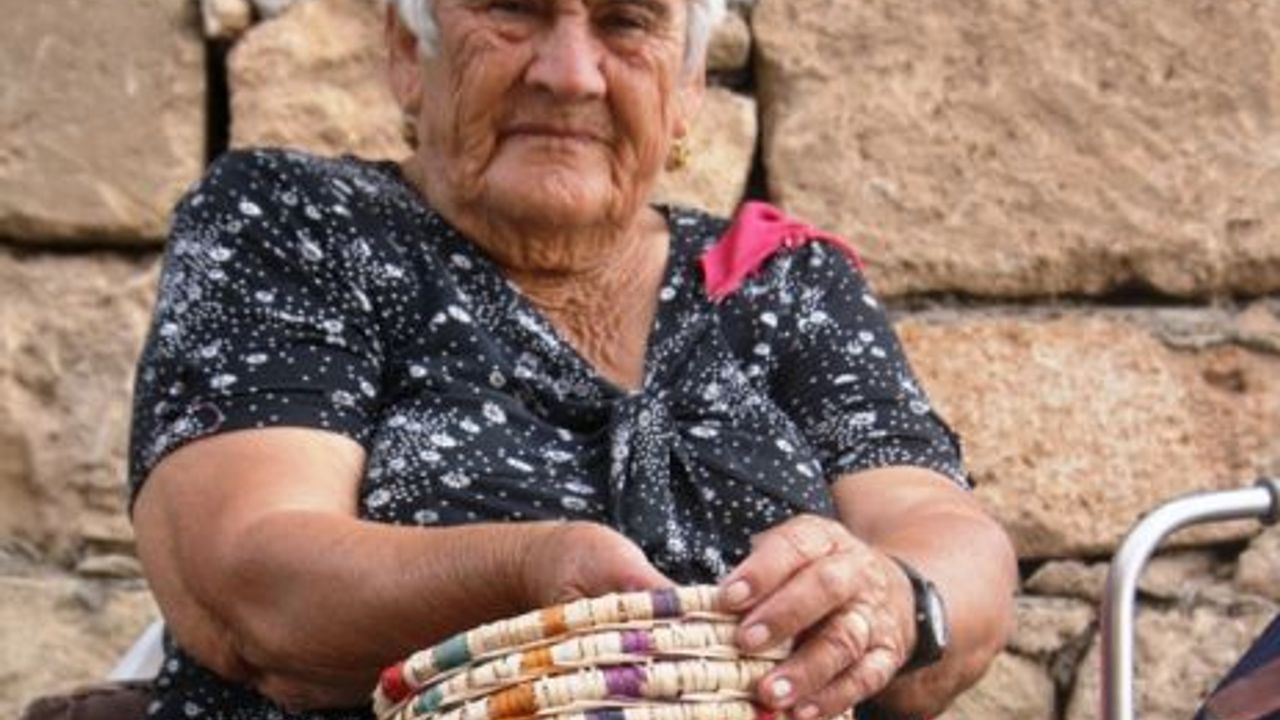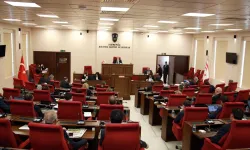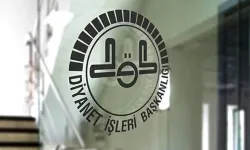Household goods such as laundry cubes decorated with patterns such as passion flower, broom, artichoke, carnation pots, diamond earrings, peacock, shuttle-loom, strainer, screw and butterflies, bread trays, flat wicker baskets to sun-dry “tarhana”, panels, wicker baskets and toy boxes wait for their new owners on the stands...
I came across 80 years old Afet Sofu when I was strolling around the historical streets of Old City Nicosia...
Grandma Afet lives in one of the houses that are in a row behind the Municipal Market (Bandabulya)...
Afet Sofu, who lost her husband 30 years ago, is among the people who resist to survive with persistence...
As she sits by the shadow of the wall, she is making a fruit basket from straws...
Originally from Mallıdağ, Afet Sofu states that the products that are produced in Mallıdağ are of higher quality: “In the past, handcrafts were more widespread. Everyone in the neighbourhood would gather, take the bundle of straws and sit down at a cool place. We would chat and make our wicker baskets. Sometimes we would even compete to see who would finish it earliest!”...
Sofu, who complains about the declining number of the ones who make the wicker baskets and the lack of interest from the part of the youth, continues by saying:
“Even though my eyes are not as good as they used to be, I both pass my time and make some pocket money by making the wicker baskets.
I learned how to make the wicker baskets when I was very young... In the past we could find more costumers but now only tourists buy it. Everyone is now excited about ready-made stuff, and forgot about the past...”
Story of the wicker basket from the field to the market
According to Afet Sofu, crops are reaped after the buckwheat sprouts and dries in water holding, hollow places and fields that are on stream beds.
After it comes into ear, the straw becomes beautiful after rain falls on it a couple of times. As the straws of the fields where a lot of rain water falls are soft, it is easier to use them.
If it doesn’t rain, the straw stays short. The years in which it rains after March, the straws are better and more plenty.
After the dried straws are cut either with hand or a tool, they are put in bundles. When the straws are brought home, their middle parts are taken out and they are again bundled up. In June, all the straws that will be used during the year are stocked to houses.
As the straws are painted with special paint, patterns are weaved on objects. This special paint comes in three colours: red, green and orange. The forth colour, purple, is made from mixing red and green. After painting, the straws are boiled and left to dry for 3 or 4 days, only to be left to the talented hands of the women later.



